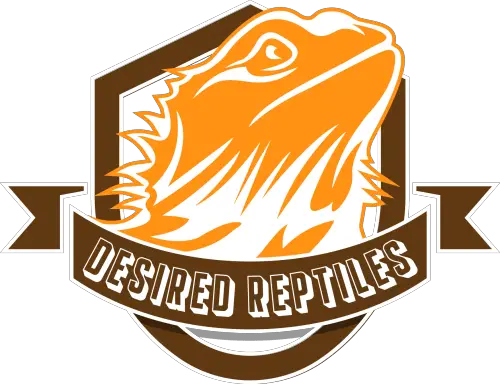Bearded dragons make lovely pets. Their docility, uniqueness, and exoticness make them quite entertaining and lovable creatures. Having a beardie entails discovering something new about their species every other day; what they can or can’t eat, how fast they run, if they have a third eye, or whether or not they can swim. Bearded dragons are exotic animals, so they’d live their lives greatly different from our regular domestic pets and it’s only safe to fully acknowledge these distinctions.
Bearded dragons can swim when they need to; they can swim to catch prey or get away from a predator, but never out of pleasure. Beardies have streamlined bodies that can be used to their advantage in a “watery” situation, but they can easily tire out and drown.
If you’re curious to know more about your bearded dragon, this article will answer your questions before you register your beardie for swimming lessons!
Should My Bearded Dragon Swim?
The direct answer is NO! Your beardie should not be swimming at all. To begin with, bearded dragons do not have water bodies in their natural habitat. So, they are not equipped or evolved to swim for pleasure for long periods. Your pet can only swim when it feels threatened or curious. Just like many other land pets, beardies do not enjoy swimming and it could seriously affect their health or threaten their lives if they do.
How Do Bearded Dragons Swim?
Beardies swim by paddling their legs and swinging their tails underwater. However, they are not buoyant, so it would take tremendous effort to stay afloat. They also cannot hold their breath underwater so they constantly keep their heads above it.

5 Reasons Why Bearded Dragons Should Never Swim
Unlike you, your bearded dragon cannot compensate for their situation to favor them. There’s only a little your pet can do when it finds itself in trouble, which in this case, is a pool of water. Here are the reasons why beardies shouldn’t swim:
1. Your Beardie Can Easily Drown
Bearded dragons can only swim short distances before they tire. Their muscles begin to weaken and tense when they paddle in the water for too long. Remember that swimming takes a lot of energy, and requires vigorous tasking to stay afloat. All these are not common for bearded dragons, and depending on the dragon’s age, it can tire and drown quickly.
2. Your Beardie Can Become Waterlogged
Bearded dragons do not have waterproof skin. This means that their bodies could easily get overly saturated with water if they sit in it for too long. This could cause several health problems for your pet like respiratory issues, immobility, digestive problems, and lethargy.
3. Your Beardie Can Suffer From Stress
Bearded dragons hate to be in situations that make them feel unsafe. A situation that is not familiar to them will seem like trouble, and thus, lead to stress. Forcing your pet to swim can cause a behavioral change due to stress and possibly lethargy to occur.
Signs Of Stress In Bearded Dragons:
- Blackening of the beard
- Swelling of the head and neck area
- Hissing
- Hiding
- Pacing around
- Stress marks: dark streaky marks around the belly area
- Unusual aggression
4. Digestive Complications
Usually, a regular method of rehydrating your bearded dragon is the soaking method where you get a container of shallow water and put your pet in it for a few minutes to help loosen its bowels. This is because of their permeable skin that allows the entry and exit of water. Since excess water can lead to diarrhea, your pet swimming is a very bad idea for its digestive health.
5. Your Beardie Is Exposed To Infection
There is the risk of exposing your pet to bacteria or fungi that may be dwelling in the water. These microorganisms are constantly seeking an entryway to a host where they can multiply, and a bearded dragon swimming around sounds just about right for such a quest.
The Only 2 Reasons Why A Bearded Dragon Should Swim
There are some cases where your dragon needs to be submerged in water. Technically, this isn’t even termed “swimming”. Instead, it’s called the soaking method.
Dehydration
When a bearded dragon is severely dehydrated, it may be a hassle getting it to drink water. In this case, soaking it in a shallow body of water is the safest way to rehydrate the beardie.
Constipation
Bearded dragons get impacted now and then for various reasons, and one way to get the junk out is by soaking them. Soaking relaxes the abdominal muscles as well as rehydrates the gut so that your beardie can excrete easily. This creates instant relief for the constipated beardie.
How To Soak Your Constipated Or Dehydrated Beardie
If your dragon is impacted or dehydrated, you may need the soaking method to grant it immediate relief. However, this must never be the only option. Ensure that you check in with your veterinary doctor for a proper assessment of the situation.
1. Get A Clean Container
A plastic container will be just fine for this procedure, but you may also try the sink or the bathtub. Just ensure that the surfaces are clean. You can do a quick wipe with a solution of vinegar and water before you start.
2. Fill With Clean Water
Now, film the container with clean water to a shallow level depending on your bearded dragon’s size. The water level should be just at your pet’s elbows. This is to prevent it from getting stressed. It may decide to move around or swim, but you must not force it to do so.
3. Put Your Pet In The Water
Gently place your beardie in the shallow water. If your pet is skittish, you may place a small object in the water so that it can prop itself on it. As long as the bottom region is submerged, your beardie is all good. The duration of this ordeal is 15 minutes at most. After 15 minutes, you can remove your beardie from the water and monitor its behavior. If it still hasn’t improved – still constipated or dehydrated – visit the vet immediately for a professional examination.
Are Electrolyte Soaks Any Good For My Bearded Dragon?
Electrolyte soaks are beneficial for bearded dragons that are recovering from illnesses or severely dehydrated. They contain minerals like magnesium, sodium, potassium, and calcium that help to maintain the electrolyte levels of your bearded dragon. Electrolyte soaks can help quicken recovery and protect your pet from further dehydration. Soaking is pretty simple, but it’s required to consult your veterinary doctor beforehand.
How To Do An Electrolyte Soak For Your Beardie
In three simple steps, you can give your beardie a successful electrolyte soak that can help it recover quickly.
Get A Container
You need a waterproof container to put your pet in. Another great option is the sink; this way, you can easily monitor your pet or hold it in place to stabilize it.
Choose A Reputable Brand
If you have consulted with your veterinary doctor, they most likely recommend a good electrolyte soak for you. A great example is the ReptiSafe reptile water that helps to purify and distill tap water as well as provide the necessary minerals for your pet.
Mix Your Solution
Usually, the electrolyte soaks come with instructions that you can follow. However, the general rule is 1 teaspoon of the solute diluted into a cup of water. Depending on the size of your pet, you may need at most two cups of water.
Gently Place Your Beardie In The Solution
Now, you can place your bearded dragon inside the solution to soak. It should not exceed 15 minutes of this procedure. Ensure that you monitor your bearded dragon’s behavior. If it displays signs of stress, do not persist with the method.
